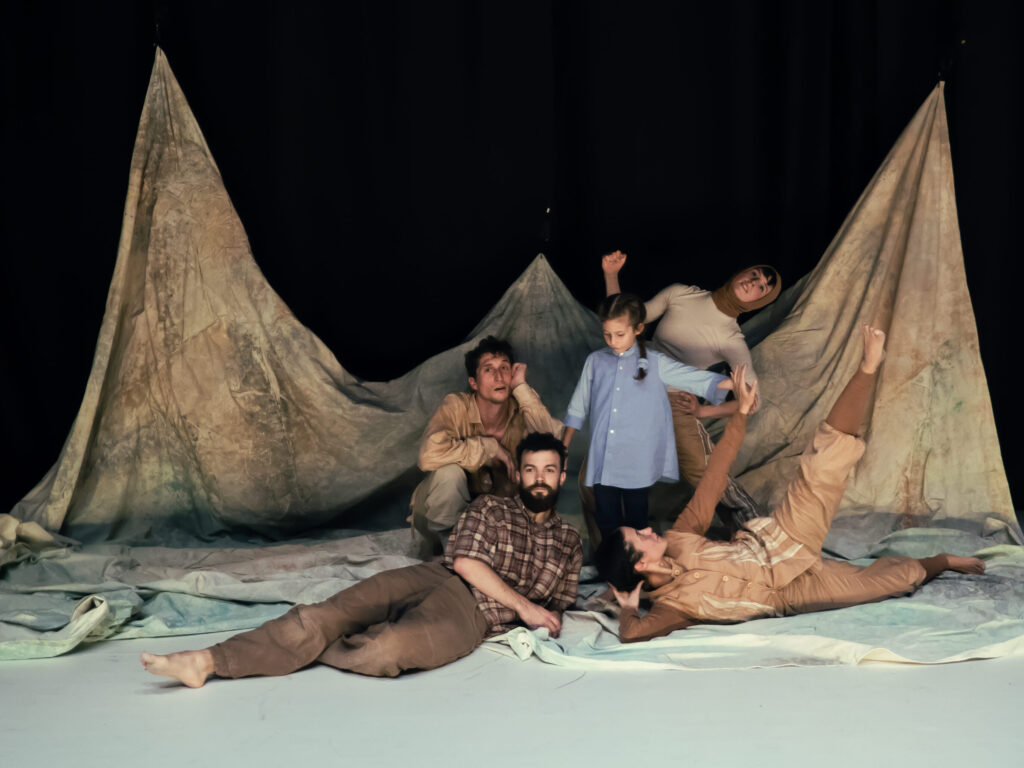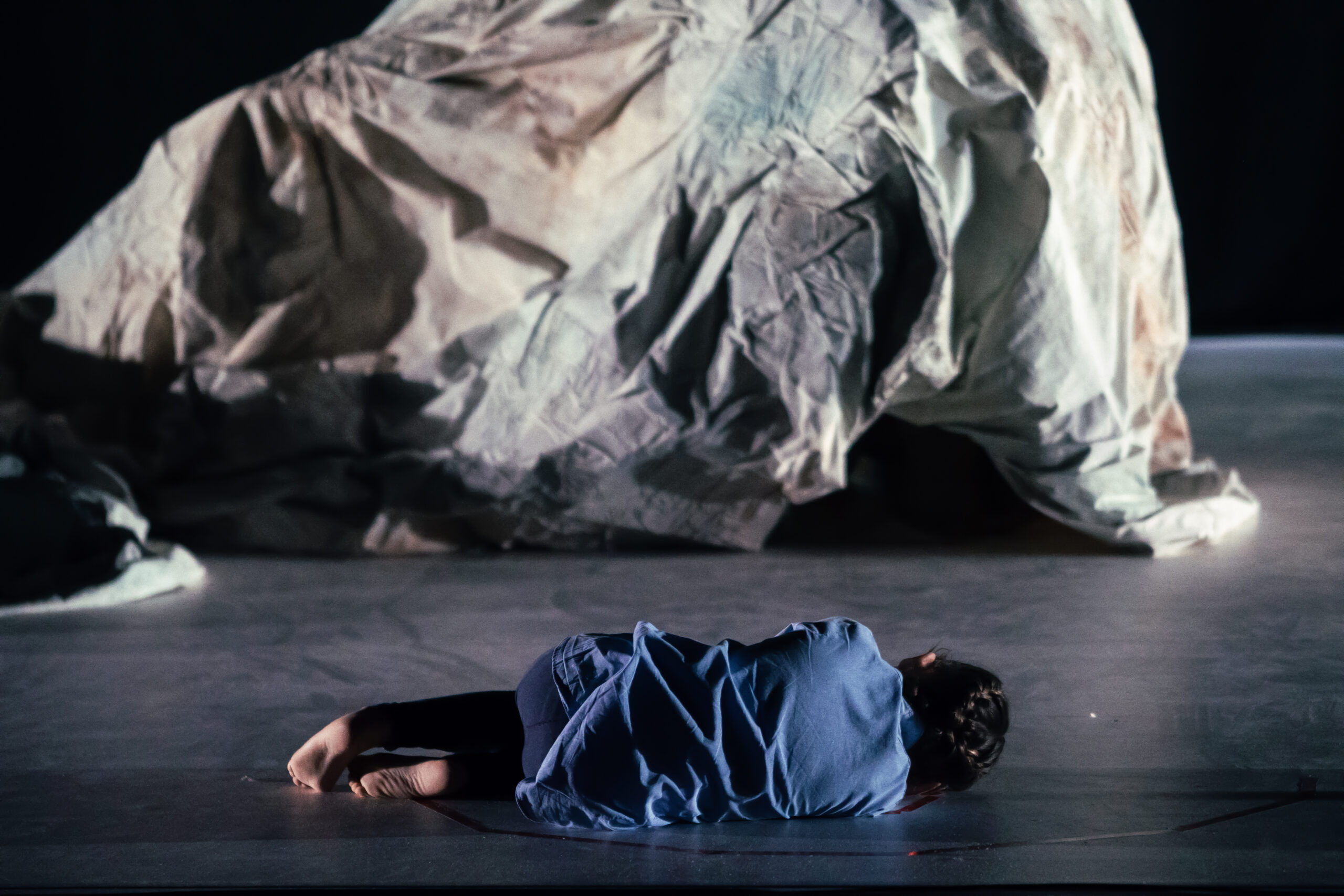a material unveiling
by AZIONIfuoriPOSTO
concept and choreography by Silvia Dezulian e Filippo Porro
with Silvia Dezulian, Lorenzo Morandini, Dorotea Porro, Filippo Porro, Gloria Trolla
dramaturg Lorenza Guerrini
sound Domiziano Maselli e Mattia Nardon
tournée sound designer Biagio Cavallo
lights Maria Virzì
costumes Aurelia Maria Foti
scene Silvia Dezulian
production AZIONIfuoriPOSTO, Pluraldanza
co-production Centro Servizi Culturali Santa Chiara, Campsirago Residenza, C&C Company
with the contribution of FONDAZIONE CARITRO
with the support of KOMM TANZ/PASSO NORD residence project by CompagniaAbbondanza/Bertoni, Ecomuseo della Judicaria, Cooperativa Teatrale Prometeo
thanks to Patagonia Montebelluna, Fondazione Museo Civico di Rovereto, Spazio ‘500per le Arti, MUSE di Trento, SGL Servizio Glaciologico Lombardo, PNAB Parco Naturale Adamello Brenta, Commissione Glaciologica SAT, Forte di Bard e TFF-Trento Film Festival
Rimaye is a term derived from a Latin word meaning 'crack' and is used in mountaineering terminology to describe the empty space in a glacier between the moving ice and the adjacent rock face.
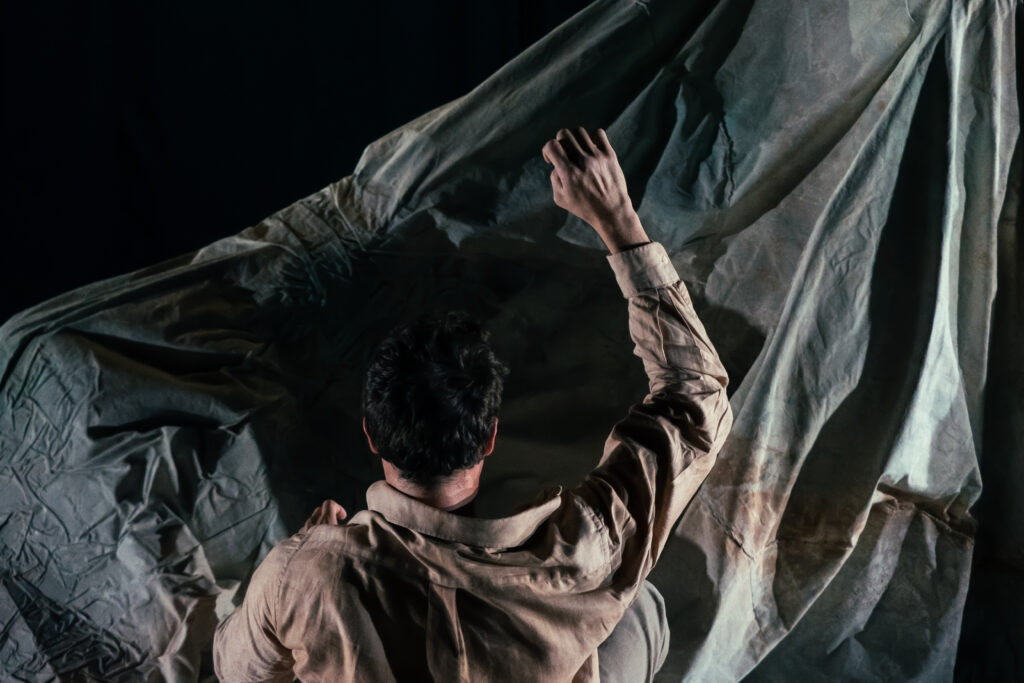
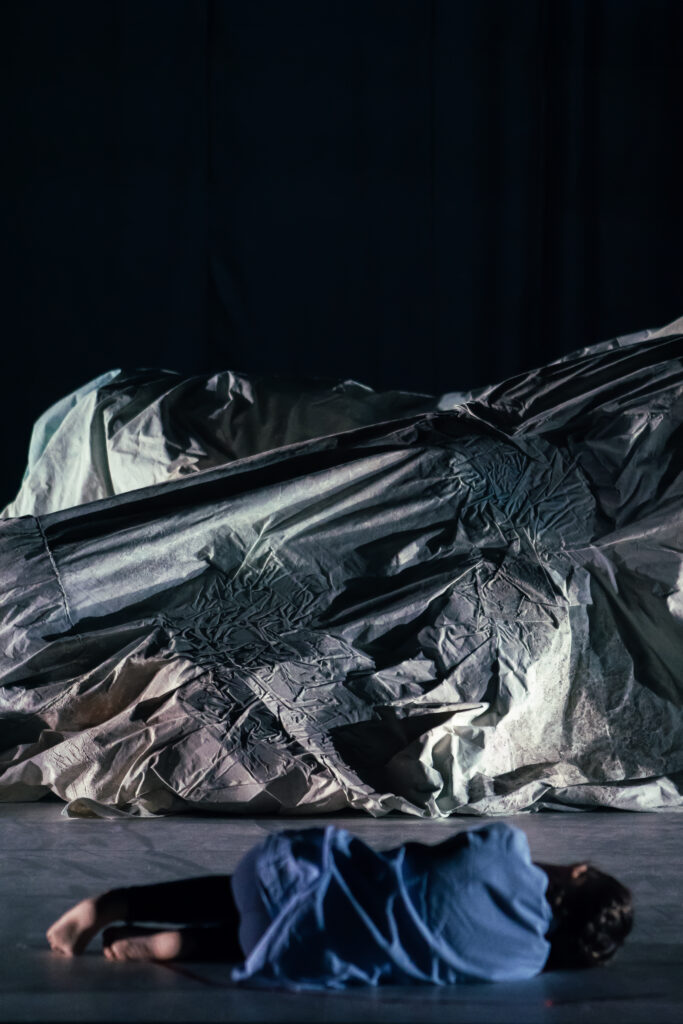
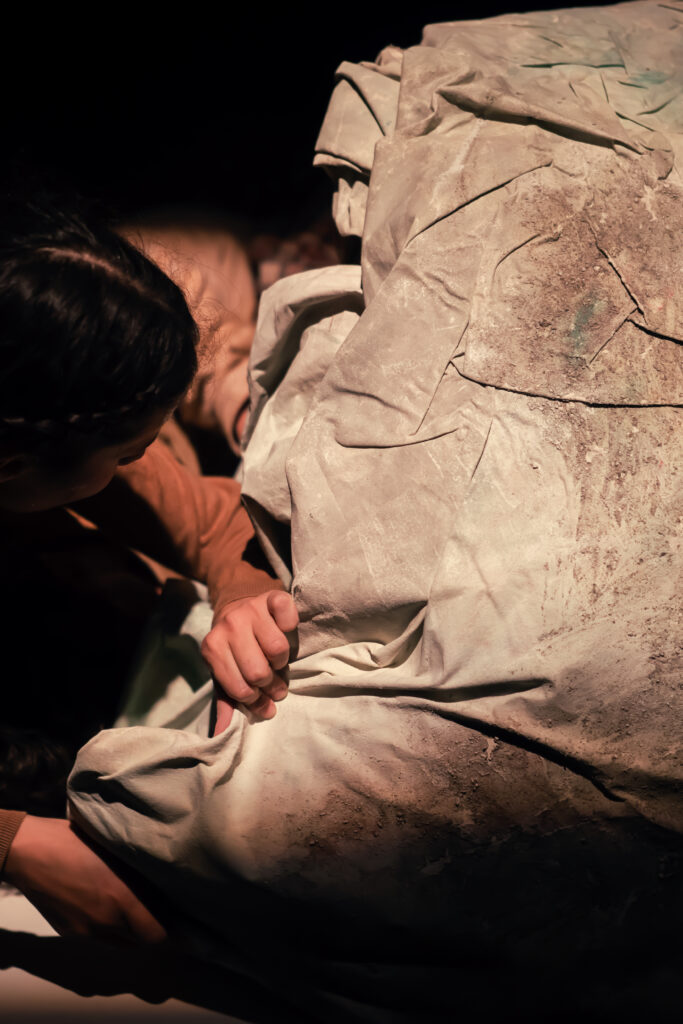
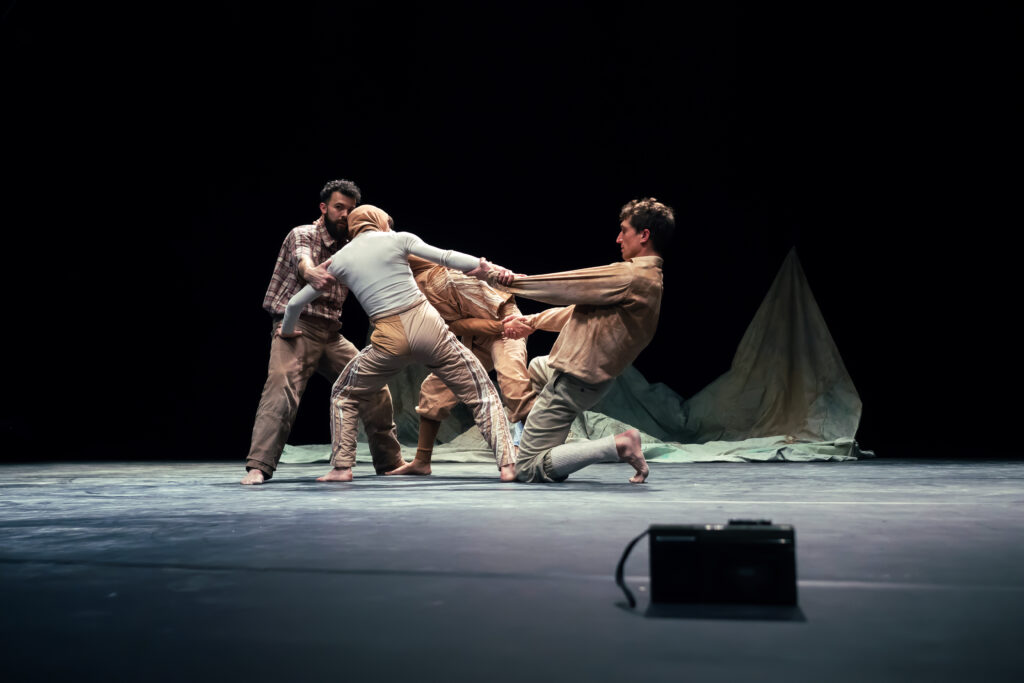
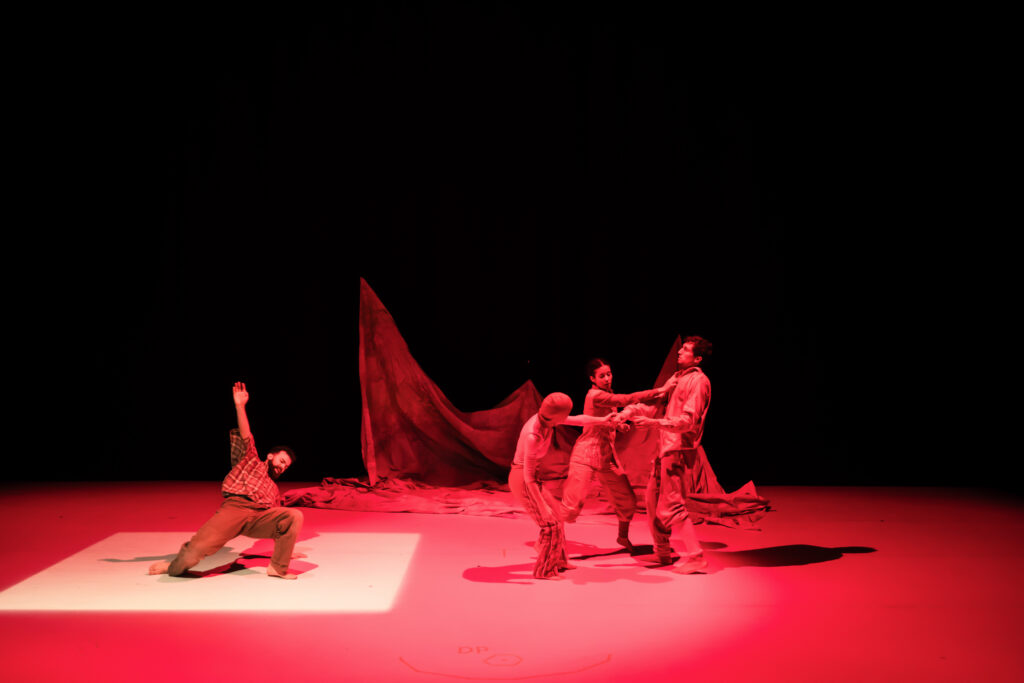
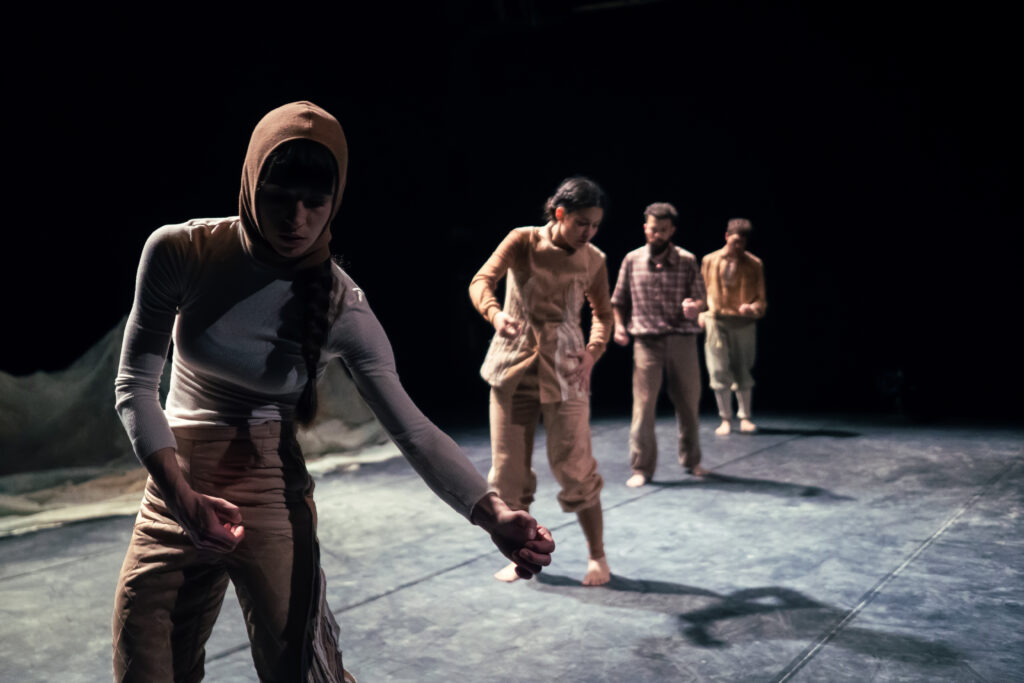
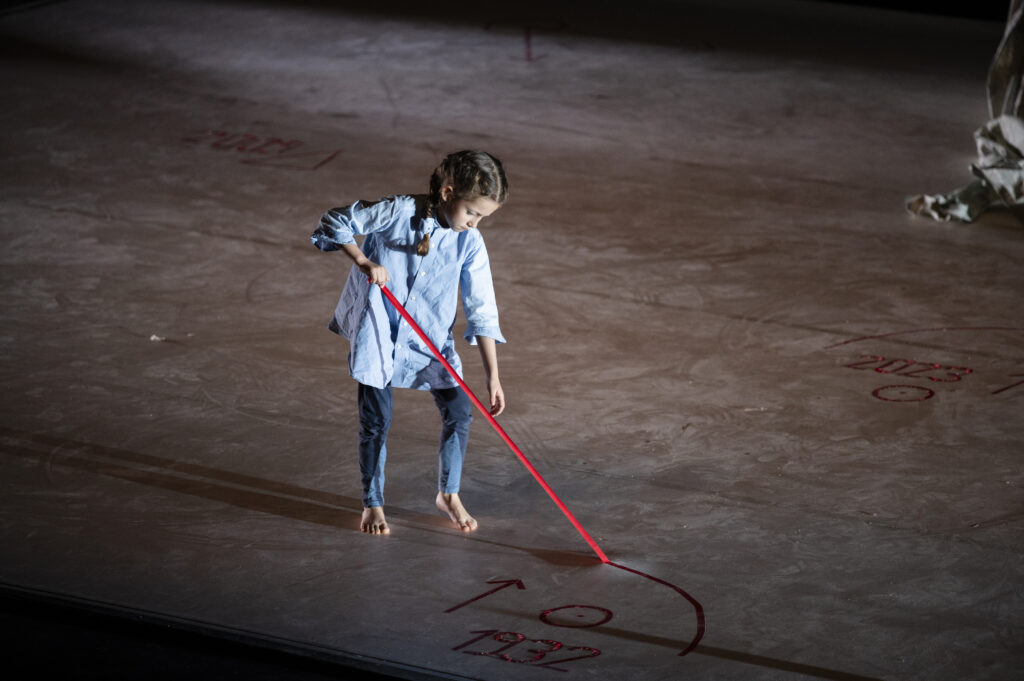
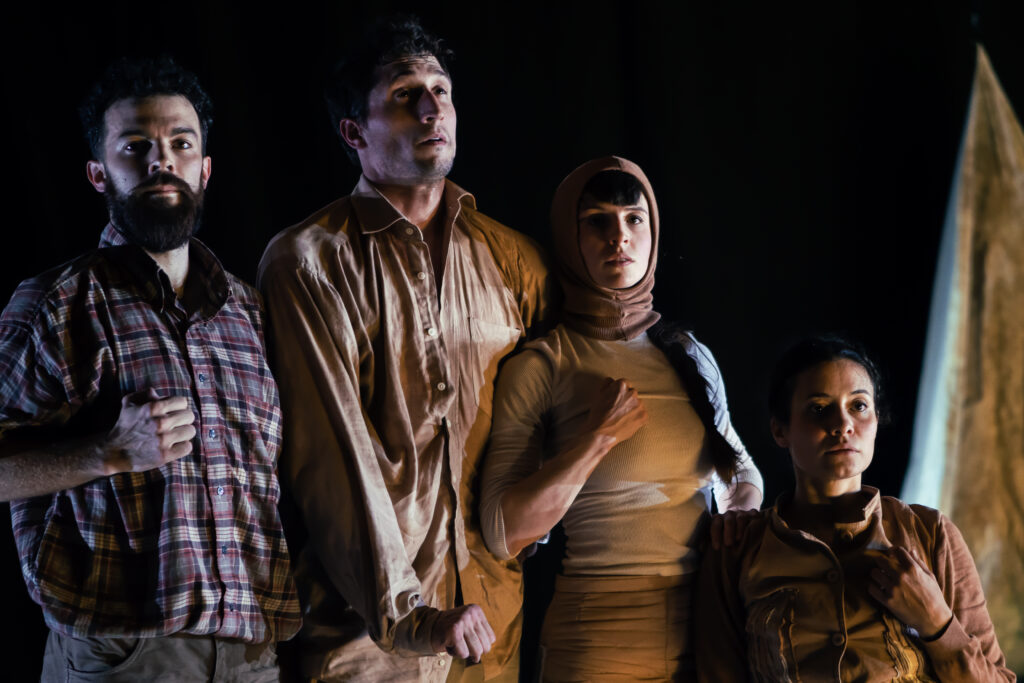
Rimaye is a dance piece conceived for the theatrical space that, by comparing the human body with the body of the glacier, reflects on themes such as climate change, memory between present, past and future, and the passage of generations.
In an atmosphere of enchantment, nostalgia and irony, through a score of gestures, words and sounds, the dramaturgy – enhanced by sets and costumes – represents the memories linked to the mountains, revealing how both humans and glaciers are fragile elements of a changing environment and custodians of memories, stories and experiences destined to disappear.
The project combines performative-choreographic research with scientific and historical studies of changing mountain landscapes. During the development of the project, the company took part in a series of excursions and field research on several glaciers in the Alps, with the participation of glaciologists and mountain guides.
The dramaturgy is based on the dancers’ personal memories of the mountains – fragments expressed through monologues, dialogues and music. Like the glaciers, the memories will sooner or later disappear, but they will leave traces, just like the vanishing glaciers in the landscape.
It is only a matter of time. The body is like a glacier: the drop of water that penetrates between the cracks in the ice, expanding them and moving them imperceptibly downstream, becomes a drop of sweat that penetrates between the bodies, breaking them down little by little until they are exhausted, finally falling to the ground.
